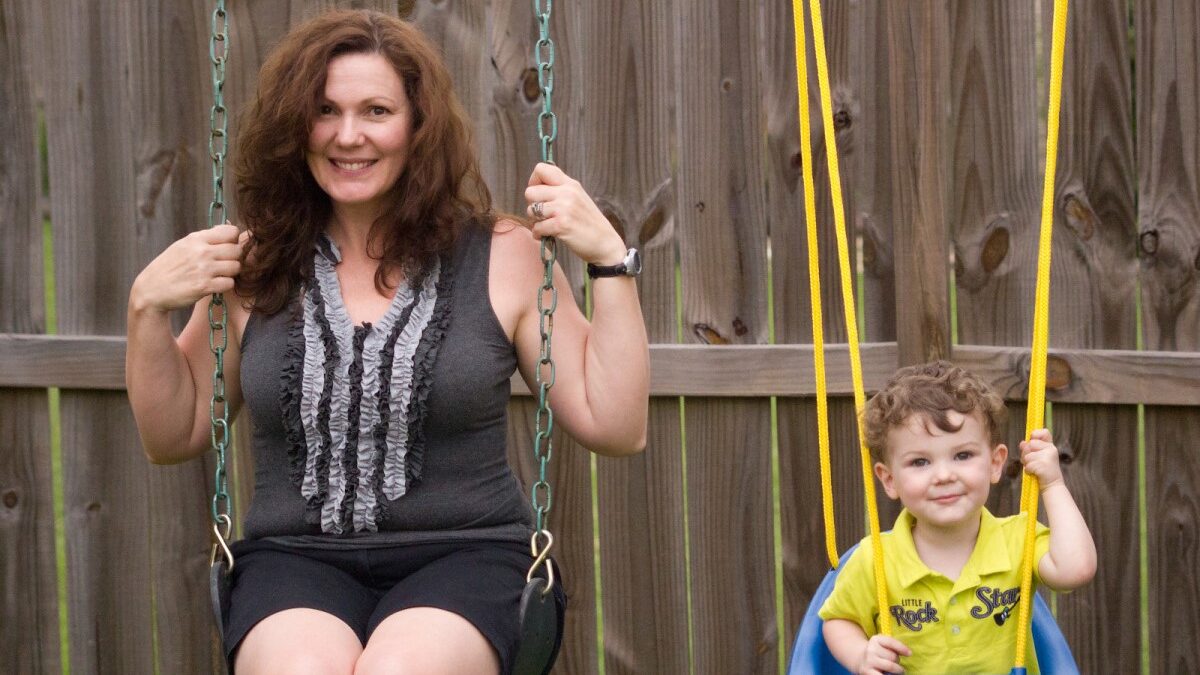
Amber is six months pregnant when she assaults a female nurse and punches me in the head. She is a schizophrenic and drug addict who earns money prostituting on the street. This is her third child. She rejects any form of birth control because she wants a baby. After the state took custody of her last two children she is obsessed with having a baby, but is not equipped mentally or physically to care for one.
Elaine is in her forties and has cut her arms so many times that they are nearly entirely covered in pulpy scar tissue. When not institutionalized, she drinks vodka then cuts herself in a public place and calls 911 so she can be hospitalized again. She’s had six children, four of whom the state took into care and the youngest two cared for by their father. These are just two examples of a problem that is becoming more and more apparent and heart-breaking in clinical psychiatric centers. The fate of these children is largely unknown—that is, until they return to those very same psychiatric centers later in life as patients.
How Many Mentally Ill Women Become Mothers?
It is difficult to find hard numbers on the number of children born from chronic mentally ill mothers; however, in 2014 a study of the teen pregnancy rates among Canadian girls with major psychiatric disorders (bipolar, severe depression, psychotic disorders) was found to be three times higher than the average population.
Furthermore, the study found that such girls were more likely to have more children following the birth of their first; “Services focused on counseling girls who already have delivered one child may also be important because the rates of multiple births are higher among those with major mental illness.” The authors of this study note that—to their knowledge—it was the first of its kind, which means that in spite of constant public outcry for increased mental health care the implications of business as usual are not being studied in depth.
The number of adults with severe mental illness in 2012 was approximately 4.1 percent of the population, according to the National Institute of Mental Health. This number leaves out those adults for whom their mental illness does not represent a major inability to think and function in society, similar to the numbers assessed by the Canadian study of adolescent girls. These adolescents and adults who become pregnant and give birth raise a number of moral, economic, and ethical questions as to how our society should move forward in coping with both mentally ill mothers and their children.
Statistically, children of the mentally ill have a higher chance of becoming mentally ill themselves. This is due to combination of both nature and nurture; severe mental illness has a strong genetic factor. Add to that the stress and chaos of being raised by a severely mentally ill parent, or the child being passed around to foster parents or group homes, and it creates the perfect storm for developing any number of mood disorders, behavioral problems, and juvenile delinquency, let alone the increased possibility of the onset of a neurological disorders such as schizophrenia or bipolar disorder. These conditions can lead the child to a life of illness, poverty, crime, and self-destruction.
All Potential Answers Have Problems
People with severe mental illness, particularly when they do not have a strong support system of family around them, are notorious for ceasing to take their medication once they leave a clinical setting. Many stop taking their medication because they believe they no longer need it. Many never wanted to take it in the first place and quit immediately. Paranoid schizophrenics fear the medication, and some bipolar patients actually yearn for their manic phases because they feel so much more euphoric and proud, despite the consequences of those periods.
In other words, the severely mentally ill lack the forethought and coherence of mind to actually take a birth-control pill every day, let alone the medications that help their mental functioning. Many live in poverty, abuse illegal drugs as a way of self-medicating, and engage in any number of risky behaviors such as prostitution to earn money or support drug habits. Often, mentally ill adults tend to gravitate toward each other due to socio-economic status and behavioral habits, thus increasing the chances that any children will have a genetic predisposition to inherit the parents’ malady. It also exposes mentally ill female patients to any number of dangerous situations and makes them vulnerable to rape and sexual assault. Thus, there are many pregnancies created out of terrible circumstances and often the father is not known.
Possible solutions to these issues may appear easy on the surface but are actually more difficult to put into practice. Obviously, terminating the pregnancy would be an option, however there are various restrictions; first and foremost, the mentally ill mother must actually want to have the abortion.
Secondly, many hospitals no longer perform abortions, leaving this procedure to outside clinics. Therefore, provided the patient desires an abortion she must actually take the initiative to go to the clinic and have the procedure performed on her own. Oftentimes, these plans fall by the wayside. Thirdly, restrictions on how late in the pregnancy an abortion can be performed means that if the patient is hospitalized too far into the pregnancy there would be nothing that the hospital could do for her anyway.
The Mentally Ill Can Legally Do What They Want
A patient cannot be forced to do or accept anything without the clinicians going through a series of legal procedures. A paranoid schizophrenic can reject any and all medication simply by saying “no,” unless he or she becomes violent. In that case, the medication can only be forcibly administered in that particular instant of violence. In some situations, a judge can assign a conservator—generally a family member—who can give permission for drugs to be administered to that patient; however, clinicians can still not give medications against the patient’s will.
To force a patient to receive medications, another court hearing must be scheduled and the judge must rule that this can be done. All of this takes weeks, if not months. Therefore, forcing a patient to accept some form of birth control such as the birth-control implant must come from a conservator who gives permission for the device to be placed and a judge who determines the hospital can do this against the patient’s wishes. Birth-control measures must be reversible. Legally, a procedure such as tying the patient’s tubes to prevent further pregnancies is nearly impossible.
This obviously brings up a number of moral and ethical questions that must be weighed against the economic and social impact that the birth of these children will have on society. If the children are not removed immediately from the patient’s custody and put into the state foster system, they often have to be closely monitored by social workers throughout their lives. Studies have found that up to 50 percent of mothers with severe mental illness lose custody of their child at some point. A 2002 survey of studies reported in Primary Psychiatry states that approximately 20 percent of parents retain full custody of their children, but of that number, only 12 percent are primary caregivers, with care for the child often coming from grandparents or other family members.
Sometimes the patient will agree to give the child up for adoption and, while the child may end up in a more stable environment, both he and his adopted parents cannot escape the child’s genetic history combined with the increased chances of behavioral issues that exist among adopted kids. The Agency for Healthcare Research and Quality found that mental health disorders were one the five costliest health problems in the United States, “with care expenditures rising from $35.2 billion in 1996 to 57.5 billion in 2006.” It also says, “Treating mental disorders in children, such as depression, cost the most at $8.9 billion compared with $8 billion for asthma and $6.1 billion for trauma-related disorders.”
There’s Hope for the Children of the Mentally Ill
Of course, these increased risk factors are only risks, not guarantees of the child growing into an adult with severe mental illness or even with emotional disorders. Dorothy O’Connor is a psychiatric nurse. Her mother, whom she now cares for in her home, is bipolar with psychosis, which causes her to become delusional.
Dorothy’s mother had a psychotic break when she was a young woman, but the episodes of psychotic mania largely subsided until after her marriage and the birth of her three daughters. After that, the psychotic breaks became more frequent and regular. “My mom had her first break [that Dorothy recalls] when I was about nine and I don’t remember much about it. I just remember her being gone and Dad saying ‘she’s sick in her brain.’ After that she started having an episode about once a year. She was very manic, not really depressed. A lot of paranoia, a lot of bizarre behaviors.”
While Dorothy’s mother worked as a registered nurse, her episodes caused her to lose jobs because she would come to work in the midst of her delusions, once showing up at work with tape covering her mouth because she didn’t want to talk. Dorothy and her siblings came to look forward to the times when their mother would go to the hospital, because “we knew when she came back she would be normal again.” Dorothy and her sisters once came home to find their mother had taken a pair of scissors to the wall-to-wall carpeting throughout the house. At another point, she forced them to walk a mile and a half home through February winter because she insisted that the car had been stolen from a store parking lot, even though the girls could clearly see the car right in front of them.
The police would occasionally visit their home when their mother was yelling loud enough to disturb the neighbors, but no recourse was taken to Child Protective Services. While Dorothy’s father traveled for work, she largely credits him with the positive outcome in her and her sister’s lives, bringing normalcy and stability where there would have been chaos otherwise. “I was very fortunate in that my parents stayed together.”
Dorothy and her sisters’ success can largely be attributed to their socioeconomic status and the presence of their father in their lives. They grew up in a small but affluent community where the police were less inclined to call in social services, particularly when there was still a capable parent and grandparents involved.
If Dorothy’s mother had been single, the outcome would have been much different. Even with a stable home life and therapy, Dorothy’s mother was unable to maintain jobs for extended periods of time due to her episodes. Clearly, had a stable father not been present in this situation, the girls would have had massive hurdles to face and would have warranted some kind of state involvement when their mother had to be hospitalized.
Even with all these positive factors in Dorothy’s life, her mother’s illness still maintains an intimate presence: “I always thought it was strange that of the three of us—all girls—none of us ever chose to have kids. My mom loves us, but she wasn’t good with kids. She was very stiff around kids. I can’t speak for my sisters but for me it wasn’t that I was worried about passing on the genes but it was just… I never felt that maternal connection with my mom that made me want to be a mother as well.”
No Easy Answers
Dorothy’s situation was ideal. Mothers of lower socioeconomic status or in situations where there is not a stable home life have little to no chance of successfully raising children. Add to that mixture the increased tendency toward drug and alcohol abuse, poverty, limited access to healthcare, and genetic lineages of mental illness, and the prospect of a severely mentally ill mother raising a child or multiple children begins to seem hopeless.
For her part, Dorothy feels that prevention through birth-control implants for those who genuinely cannot function in society is a necessary albeit unsavory option. “My mother could function when she wasn’t having one of her episodes but so many of these mothers that we see cannot. I do think there should be some sterilization. I hate to say that, but how fair is this to these kids or to the adopted parents who take on these kids? I know there are success stories but it’s scary. And abortion—regardless of where you fall on the issue—it just seems like it shouldn’t even have to happen. It’s a waste.”
The ethical and moral implications of these cases and the questions they present to society as a whole are complex, to say the least, and, in all their implications, contentious. The idea of sterilization, abortion, or even prevention for mothers who are mentally incapable of raising a child sounds like an ugly prospect. Add to that the fact that this adversely affects people in poverty and lower socioeconomic status, and the idea becomes an unpalatable argument for eugenics.
Still, the problem exists, and its effects on society are far-reaching. With each new generation falling into the same genetic and environmental traps of their parents, the problems and the costs of care multiply. Even in ideal situations, the effect on the children can be severe.
Sending Mentally Ill People Into the Streets Has Consequences
Ever since the deinstitutionalization of the mentally ill in the late sixties through the seventies, questions of how to provide them cost-effective care and keep them safe from both themselves and others has been a pressing social concern, albeit one with few good answers. An aspect of the deinstitutionalization that went under-reported was the fact that, on the streets or back out among the population, the chronically mentally ill would and did start having babies.
No amount of community oversight could prevent this, especially when so many were living on the streets. It was an inevitable consequence of the haphazard dumping of the chronically mentally ill into society. Even with medication, individuals can largely not make good decisions for themselves, particularly when it comes to partnering with one another. At worst, these individuals operate in a state of permanent delusion or psychosis that can, at best, only be managed under constant care and supervision.
The question of how to handle pregnancy among the mentally ill—particularly when it becomes multiple births over the course of the woman’s child-bearing years—often leaves doctors and mental health workers dismayed and shaking their heads saying, “It’s a shame,” but with little recourse or idea as to what can be done.
About six months after her assault on a nurse (and me), Amber is back on my unit. She gave birth to her baby, which the state immediately removed from her custody. She obsesses over the loss of the child and talks about having another. Luckily, she is being transferred to a long-term state facility from our unit, so hopefully she won’t have the opportunity to become pregnant again any time soon.
She sits down next to me in the patient lounge and says she wants to tell me a secret. She curls her finger for me to lean close in to her. Naturally, I’m a bit on edge and cautious. She whispers close to my ear and very quietly says, “I’m sorry I punched you in the head.” I smile and tell her it’s okay. “Water under the bridge.”









